
Why Would Anyone Buy Your Business? The Buyers Want List
December 20, 2018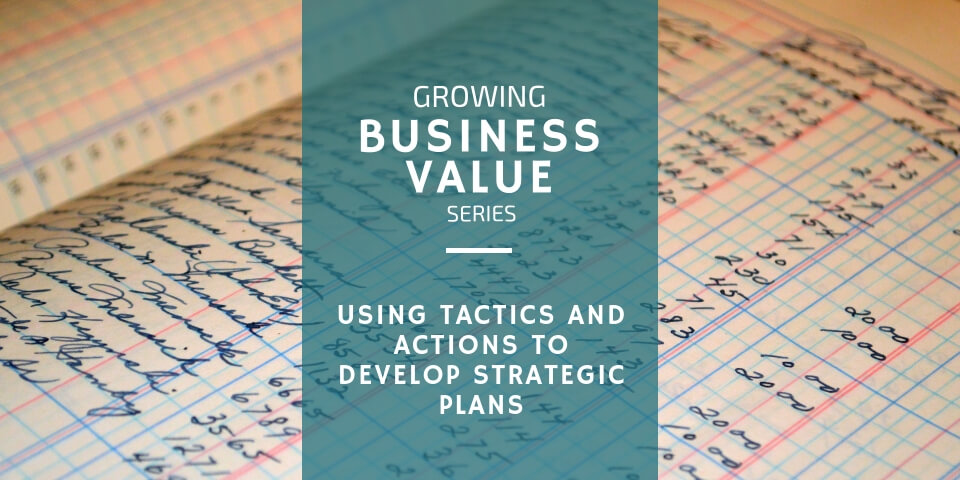
Tactics and Actions…How to Implement Your Strategic Plans
December 28, 20183 Questions to Ask When Developing Strategies to Meet Business Goals
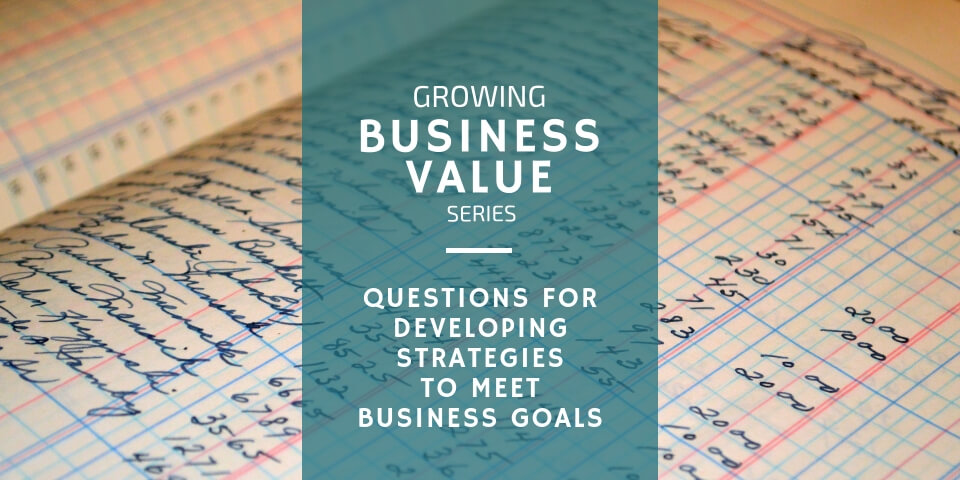
Jeff Bezos, once said, “What we need to do is always lean into the future; when the world changes around you and when it changes against you – what used to be a tailwind is now a headwind – you have to lean into that and figure out what to do because complaining isn’t a strategy.” I fully agree… complaining is NOT a strategy. Strategies are plans of action. It’s time to stop complaining about your business and start working on your business by developing strategies to meet your objectives and grow your business.
Podcast Time Index for “Strategies Within the Context of Strategic Planning”
- 00:34 – Strategies within the context of Strategic Planning
- 02:13 – The Three Questions to ask
- 03:18 – How will you Engage with your customers?
- 04:23 – Operational Excellence
- 06:19 – Product Leadership
- 08:46 – Customer Intimacy
- 10:35 – What is your business’s Strategic Focus?
- 13:19 – How will you Position your business?
- 20:11 – How are you going to grow the business?
- 25:34 – Conclusion
If you’ve been following this mini-series, I’ve been talking about how to use strategic planning to grow the value of your business. Most recently, I told you how to create your top three achievable Objectives based on the strengths, weaknesses, opportunities, and threats you identified in that SWOT analysis. Now, it’s time to make plans to achieve the goals you’ve created.
Questions to Ask When Developing Strategies to Meet Your Objectives
HOW are you going to achieve your goals? Well, that’s where a plan of action – a strategy – comes into play. If your goal is to increase your company’s profit margins by 20%, then HOW will you do that? Well, you have to increase income and decrease expenses. That would be your strategy. The steps you take to make that strategy happen will be your tactics and actions that I’ll discuss in the next article.
Your business revolves around the products and services you provide to customers in your marketplace. Logically then, your business goals will revolve around meeting the needs of your customers through the profitable sale of your products or services. Thus, you can develop your plans of action, your HOW TOs, by answering the following 3 questions:
# 1 – How Will You Engage Your Customers?
Let’s start with the first question. How will you connect with your customers? Essentially, you can use one of three methods to engage your customers.
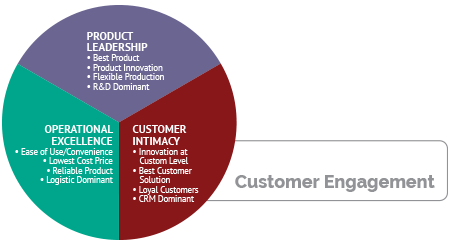
Operational Excellence
First, you can become operationally excellent. Keep your costs low by streamlining your processes, procedures, and products like Walmart. Become known for speed, volume, reliability, and consistency like McDonald’s. Although your business may offer few frills or customizations, you can duplicate your operational model again and again and turn it into a regional, national, or global franchise.
Product Leadership
Another way you can engage clients is through product leadership. Develop innovative, state-of-the-art products by focusing on research and development like Apple, Samsung, or Tesla. However, get your products to market quickly because they’ll inspire replication and duplication by competitors.
Customer Intimacy
The third and final way you can engage customers is through customer intimacy. Focus on meeting customer needs through effective customer service and unique product solutions as we do with our team. We use Customer Relationship Management (CRM) software to stay in contact with your customers. We like to celebrate milestones like birthdays and console when life is less than kind. Special treatment can help create long-term relationships with them.
The Danger in Selection
By becoming great in one of these engagement areas, you automatically exclude yourself from one, if not both, of the other two areas. In each of these business styles, you can only choose one method. Gone are the days that business owners could choose both Operational Excellence and Customer Intimacy. Instead, you must focus on one method of business and be great at it.
The biggest battle is often seen between Customer Intimacy and Operational Excellence. Consumers want the lowest price AND the highest service. Yet, this is very difficult to provide. If a Customer Intimacy company chases low prices, they lose the one-on-one with customers because there are simply fewer dollars available to hire and support the team members or the technology needed to continue the customer intimacy model. Similarly, if an operationally excellent company attempts to provide exceptional customer service and intimacy, they will have to raise their prices to pay for the manpower and technology to do so. Therefore, companies must choose one business model – Customer Intimacy OR Operational Excellence – under which to operate.
#2 – How Will You Position Your Business in the Market?
Ultimately, how you engage or attract your customers determines how you position your business in the marketplace. To explain this concept, I’ll be using Bowman’s Clock Strategy. In this concept, Cliff Bowman and David Faulker show how value and price affect your position in the marketplace. In other words, they show you ways to set yourself apart as a business, starting with low cost and low value, transitioning to higher cost and higher value, and landing on monopoly pricing with no value.
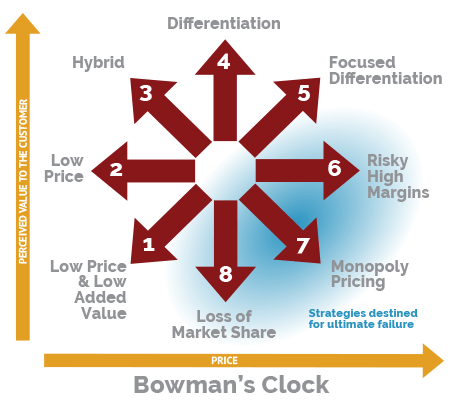
Let’s interpret this graphic. First, if you’re attracting customers through operational excellence, you can position your business as the low price leader. However, as a low price leader like The Dollar Tree or Dollar General, your products won’t be perceived as very valuable to consumers. Therefore, maybe you offer products at a low price but not the lowest price like Walmart or go farther around Bowman’s Clock into the “Hybrid” area like Target. While your products won’t be the best on the market, they’ll have some added value without much additional cost.
If the low price point doesn’t work for your business, you can strategically focus on company and product differentiation within your marketplace. Here’s where you can set yourself apart through product leadership or customer intimacy, higher product or service value. So rather than offering the lowest prices and least valuable products like The Dollar Tree or low prices and semi-valuable products like Walmart or Target, maybe you offer mid-range prices like The Gap or Casio. Your prices aren’t low, but they aren’t insanely high, either.
Yet, as you develop more niche products or services, your price will increase and your customers may decrease. The higher and more niched your prices and products get, the more risks you take to find and keep customers. Think Tiffany & Co.® or Tesla here. Eventually, if your prices get too high or your product demand gets too low, you could lose your market position completely.
#3 – How Will You Grow Your Company?
After you’ve developed strategies to attract customers to your business and to position your company within the marketplace, you’re ready to answer the following strategic question. How will you grow your company?
Like the first two, this strategy focuses on getting your products and services in front of your customers. Yet, it doesn’t have anything to do with price. According to the Ansoff Matrix, to engage customers and achieve market penetration, you can offer:
- The same products/services to the same markets.
- New products/services to the same markets.
- The same products/services to new markets.
- New products/services to new markets.
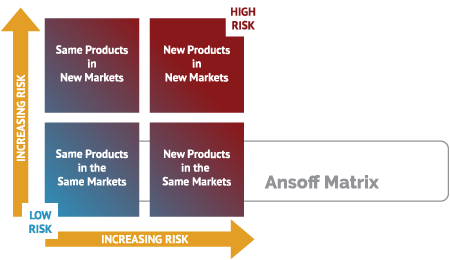
Risk as You Grow Your Business
Here’s the most interesting part of the Ansoff Matrix to me – its risk revelation. If you offer the same products in the same markets, you incur little risk to grow your company because you’re just trying to achieve market penetration. You’re trying to gain a greater share of an existing product within an existing market which could involve something like a product re-launch or increasing brand awareness.
Yet, if you were to offer new products in the same markets, then you incur a little more risk. Now, you’re dealing with product development and using your existing customer base to introduce new products. What if your current customers don’t like your new products or resent being product testers?
If you want to take less risk than you were by introducing new products to your existing market, you could offer your current products to new markets. Rather than focusing on product development, you could focus on marketing development. Maybe you expand your market by opening a new location or advertising to customers who’ve never heard of your business before. You incur the risk that new customers may not want your existing products, but they are tried and true within your existing market, so there’s not a great risk.
The riskiest move you could make to grow your company is to introduce new, untested products to new markets. However, if your current market no longer needs your products or your existing products are no longer relevant in your marketplace, you may have to take the risk. The product and market diversification could pay off for you. You could move forward into a new niche, and the risk could be worth the end results.
What Happens Next?
By deciding HOW you will engage your customers, position yourself in the market, and grow your company, you develop strategies to meet your business objectives. Remember, complaints don’t solve problems; strategies do. Once you know HOW you’re going to meet a goal, you can decide WHAT you will do and WHO needs to do it. So, join me in my next article where I’ll show you how to build the steps to achieve these goals!
Are you hung up on where to begin in your own strategic planning process? Our Strategic Planning Worksheet can help. Download yours today!



